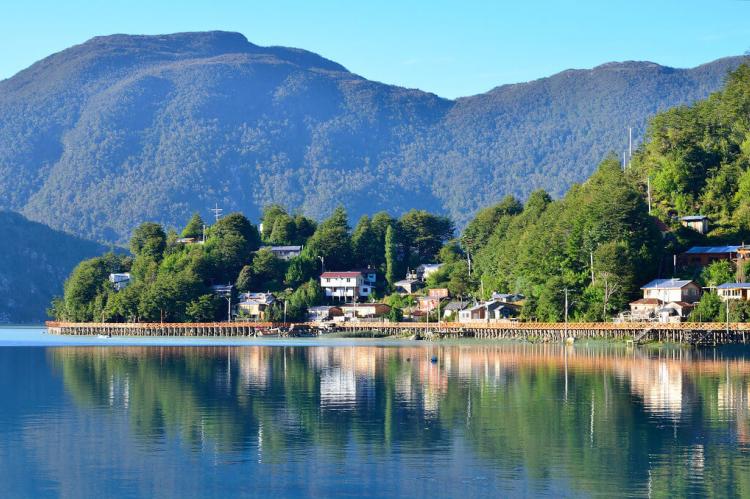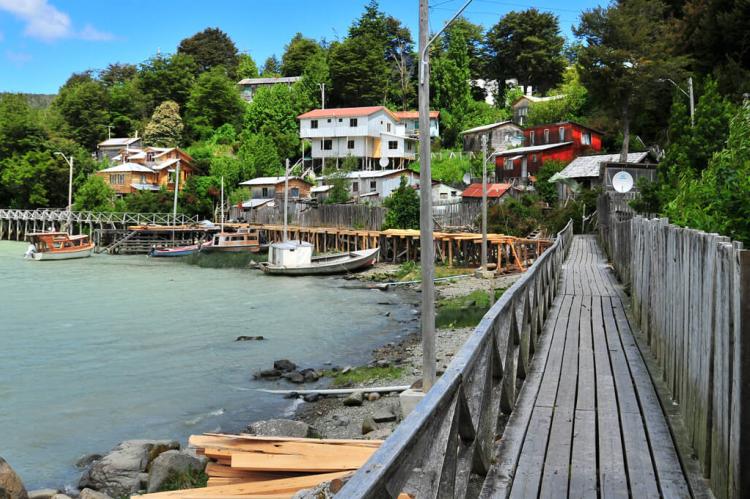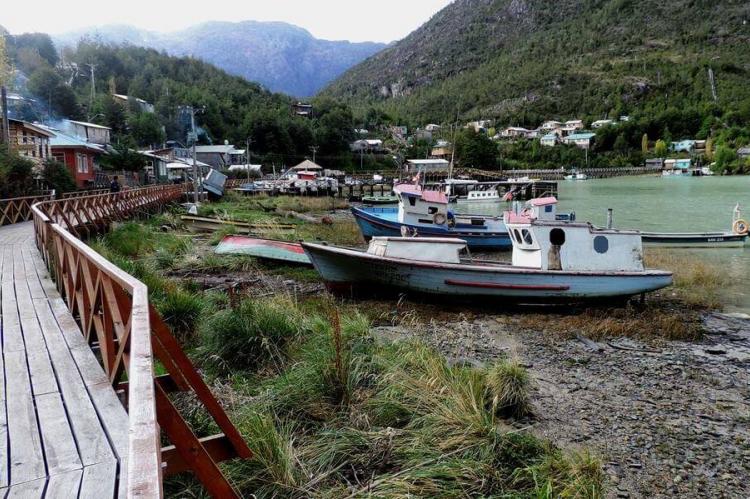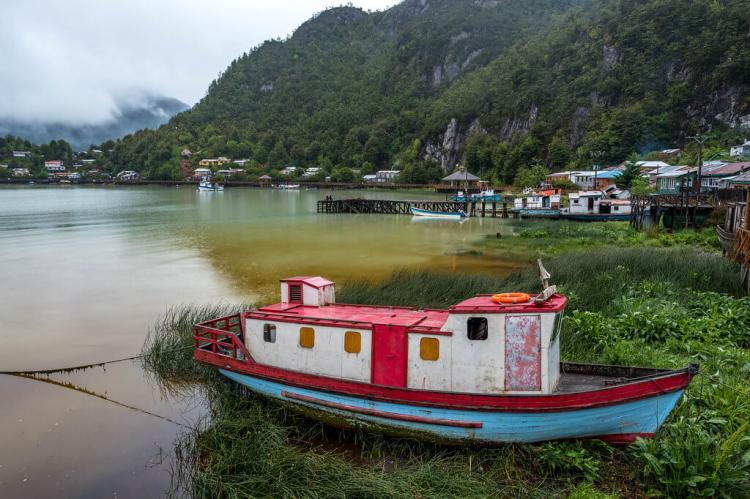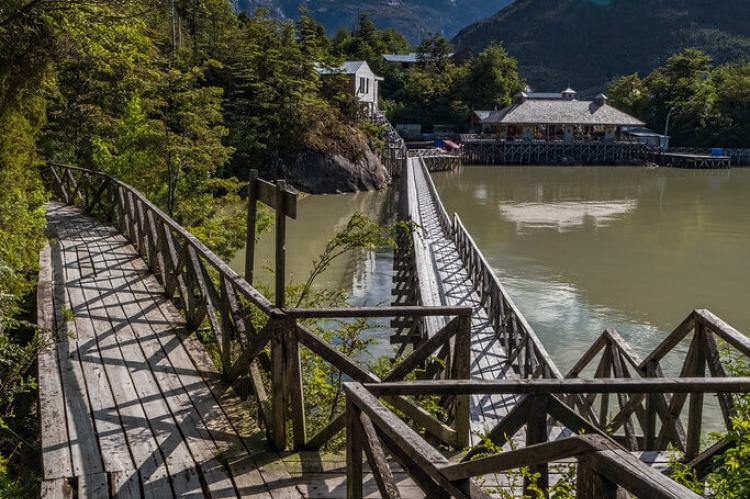Exploring Chile's Southern Pacific Coast: Caleta Tortel and Capitán Prat Province
Caleta Tortel is a charming lumber town on the southern Pacific coast of Chile. Its picturesque stilt houses, wooden walkways, and fjord landscapes are a testament to its inhabitants' resilience. Capitán Prat Province, named after naval hero Arturo Prat, offers vast, untamed wilderness to explore.
Exploring Chile's Southern Pacific Coast: Caleta Tortel and Capitán Prat Province
Nestled amidst the rugged beauty of Chile's southern Pacific coast lies Caleta Tortel, a quaint lumber town steeped in history and natural splendor. With its picturesque stilt houses, intricate wooden walkways, and stunning fjord landscapes, Caleta Tortel is a testament to the resilience and ingenuity of its inhabitants. Meanwhile, the surrounding Capitán Prat Province, named after the naval hero Arturo Prat, offers a vast expanse of untamed wilderness and pristine beauty, beckoning adventurers to explore its remote reaches.
Caleta Tortel: A Lumber Town Frozen in Time
Caleta Tortel, with its charming stilt houses and winding wooden walkways, exudes an old-world charm that harks back to a bygone era. Founded in 1955 to exploit the abundant wood of Guaytecas Cypress, the town's architecture tells the story of its first settlers, who arrived in the area seeking refuge and opportunity. Today, Caleta Tortel has been declared a heritage site, its unique architecture serving as a tangible reminder of the town's rich cultural heritage and pioneering spirit.
Unlike conventional towns, Caleta Tortel boasts an intricate walkway system crafted from native Guaytecas Cypress wood, spanning approximately 8 kilometers around the cove. These wooden walkways, winding through the fjords at the mouth of the Baker River, have become an integral part of the town's identity, offering residents and visitors a glimpse into its distinctive culture and way of life. Without these walkways, communication and travel between houses would be restricted to boats, highlighting the town's isolation and reliance on its natural surroundings.
The original settlers of Caleta Tortel hailed from Chiloé and were renowned for their woodworking skills, particularly with axes. The arrival of the Baker Exploitation Society in 1904 brought an influx of workers to the area, further shaping the town's development and economy. Today, the timber business remains a cornerstone of Caleta Tortel's economy, reflecting its deep-rooted connection to the surrounding forests and rivers.
Despite its remote location, Caleta Tortel has become a magnet for tourists drawn to its unique architecture, pristine landscapes, and rich cultural heritage. Visitors can wander along the wooden walkways, explore the town's historic sites, and immerse themselves in its tranquil atmosphere, gaining insight into the lives of its resilient inhabitants.
Capitán Prat Province: A Wilderness Waiting to be Explored
Surrounding Caleta Tortel lies the vast expanse of Capitán Prat Province, a land of rugged beauty and untamed wilderness. Named after the naval hero Arturo Prat, the province is one of four in the southern Chilean region of Aisén. It encompasses some of the country's most remote and least populated areas.
Spanning an area of 37,043 square kilometers (14,302 square miles), Capitán Prat Province offers a diverse landscape of islands, fjords, channels, and estuaries, providing endless opportunities for exploration and adventure. The province is a playground for outdoor enthusiasts and nature lovers, from the towering peaks of the Northern and Southern Patagonian Ice Fields to the tranquil waters of the Baker River and beyond.
Despite its vast size, Capitán Prat Province is sparsely populated, with a population of just over 3,800 according to the 2002 census. Its capital, Cochrane, serves as a gateway to the region, offering amenities and services to travelers embarking on expeditions into the wilderness.
For centuries, Capitán Prat Province remained accessible only by air and boat, adding to its mystique and allure. However, in 2003, a road was constructed connecting Caleta Tortel to the Carretera Austral, Chile's Route 7, providing a new means of access to this remote corner of the world.
Capitán Prat Province offers many outdoor activities for adventurous souls, from hiking and kayaking to wildlife spotting and glacier trekking. Whether traversing its rugged terrain or simply basking in its unspoiled beauty, visitors to this enigmatic province will surely be captivated by its natural wonders and timeless charm.
In conclusion, Caleta Tortel and Capitán Prat Province stand as hidden gems awaiting discovery amidst the wild landscapes of southern Chile. With their rich history, breathtaking scenery, and spirit of adventure, they offer travelers a glimpse into a world untouched by time. In this world, nature reigns supreme, and the human spirit thrives in harmony with the land.
